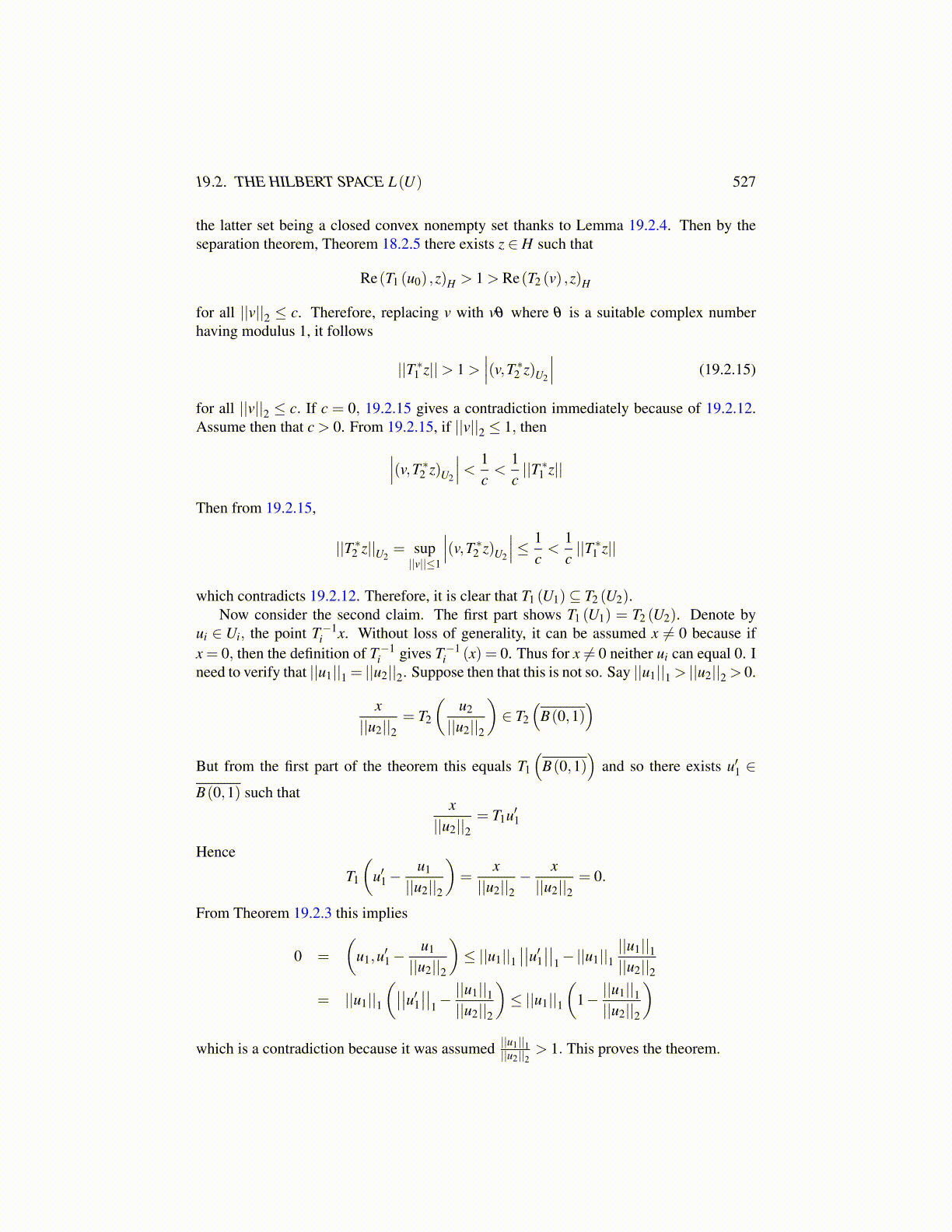
19.2. THE HILBERT SPACE L(U) 527
the latter set being a closed convex nonempty set thanks to Lemma 19.2.4. Then by theseparation theorem, Theorem 18.2.5 there exists z ∈ H such that
Re(T1 (u0) ,z)H > 1 > Re(T2 (v) ,z)H
for all ||v||2 ≤ c. Therefore, replacing v with vθ where θ is a suitable complex numberhaving modulus 1, it follows
||T ∗1 z||> 1 >∣∣∣(v,T ∗2 z)U2
∣∣∣ (19.2.15)
for all ||v||2 ≤ c. If c = 0, 19.2.15 gives a contradiction immediately because of 19.2.12.Assume then that c > 0. From 19.2.15, if ||v||2 ≤ 1, then∣∣∣(v,T ∗2 z)U2
∣∣∣< 1c<
1c||T ∗1 z||
Then from 19.2.15,
||T ∗2 z||U2= sup||v||≤1
∣∣∣(v,T ∗2 z)U2
∣∣∣≤ 1c<
1c||T ∗1 z||
which contradicts 19.2.12. Therefore, it is clear that T1 (U1)⊆ T2 (U2).Now consider the second claim. The first part shows T1 (U1) = T2 (U2). Denote by
ui ∈ Ui, the point T−1i x. Without loss of generality, it can be assumed x ̸= 0 because if
x = 0, then the definition of T−1i gives T−1
i (x) = 0. Thus for x ̸= 0 neither ui can equal 0. Ineed to verify that ||u1||1 = ||u2||2. Suppose then that this is not so. Say ||u1||1 > ||u2||2 > 0.
x||u2||2
= T2
(u2
||u2||2
)∈ T2
(B(0,1)
)But from the first part of the theorem this equals T1
(B(0,1)
)and so there exists u′1 ∈
B(0,1) such thatx
||u2||2= T1u′1
Hence
T1
(u′1−
u1
||u2||2
)=
x||u2||2
− x||u2||2
= 0.
From Theorem 19.2.3 this implies
0 =
(u1,u′1−
u1
||u2||2
)≤ ||u1||1
∣∣∣∣u′1∣∣∣∣1−||u1||1||u1||1||u2||2
= ||u1||1(∣∣∣∣u′1∣∣∣∣1− ||u1||1
||u2||2
)≤ ||u1||1
(1− ||u1||1||u2||2
)which is a contradiction because it was assumed ||u1||1
||u2||2> 1. This proves the theorem.